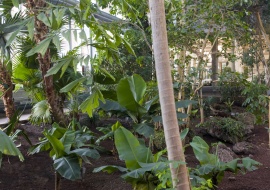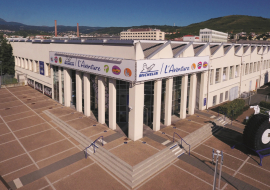Description
Located outside the city’s walls and crossed by the former Roman path (currently Chaussée Claudius), Place des Carmes, long occupied by farming land, is close to Route de Montferrand, below Place Champet, today named Place Delille. Its space was given over to religious orders, with the Chantoin monastery in the 6th century, on the site of the chapel and the cemetery, replaced by the Discalced Carmelites in 1653, the Jacobins in the 13th century on the street bearing their name and the Augustines Hospitalières nuns in 1672 in a large enclosure to the south. The river Tiretaine crosses the square from west to east, the driving power generated by the water explaining the presence of the Raynaud mill (future Michelin headquarters) then plants.
In 1832, two cousins, Aristide Barbier and Édouard Daubrée, started to manufacture farming machines and equipment for the sugar industry. Under the name “Barbier et Daubrée”, they had workshops on Place des Carmes and in Blanzat, in the early 1850s. The company thrived under the Second Empire, with 400 employees in around 1860. It then diversified into producing small rubber items (balls, joints, marbles, pipes), marking the start of rubber production in Clermont-Ferrand, along with other entrepreneurs such as Torrilhon and Bergougnan.
From 1886, brothers André and Édouard Michelin, grandsons of Aristide Barbier, rescued the struggling company and named it Michelin et Cie in 1889. The elder brother, André, was a graduate of the prestigious Centrale Paris engineering school, and a builder of Eiffel-type metallic structures in Paris. He was the architect of the Saint-Joseph covered market in Clermont-Ferrand. Édouard was a law graduate and an artist who came in first place in the École des Beaux-Arts de Paris admissions exam in 1881.
Their innovations, including removable tyres and road maps, would set the company on a sustainable track. Since its origins the company headquarters has always been on Place des Carmes. It is the only international company to have kept its headquarters on the site where it was founded. At the site entrance, a large greenhouse houses exotic plants and particularly hevea, which are used to produce rubber.
L’Aventure Michelin, 32 rue du Clos-Four in Clermont-Ferrand recounts the entire history of the plant.
Additional info
- Spoken languages :French
Prices
Free access.






